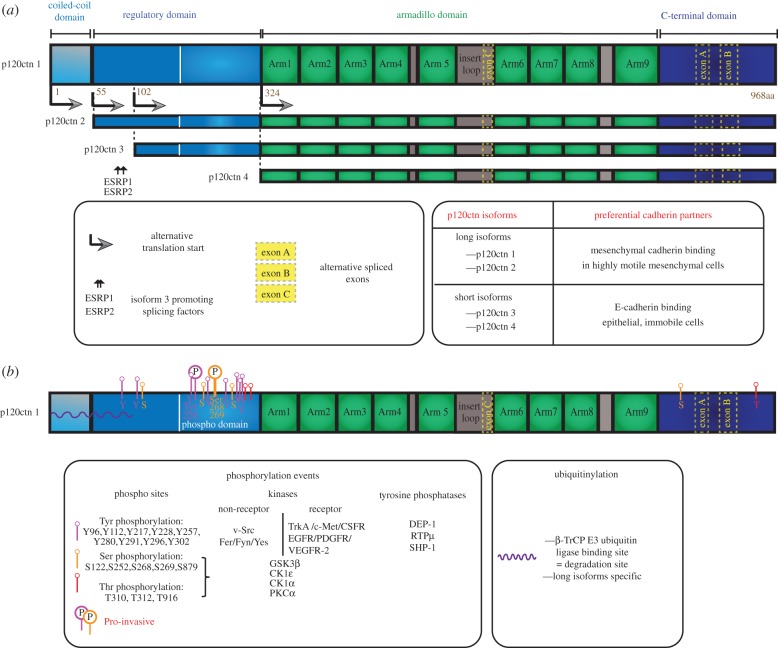Figure 1.
The molecular diversity of p120catenin: alternative translational isoforms and post-translational modifications. (a) Molecular structure and alternative translational isoforms formation. The four p120catenin isoforms emanate from alternative initiation start codons (the arrows indicate the beginning of the translated region, the number indicates the position on the isoform 1 of the first amino acid of each isoform). The longest isoform (p120catenin1) contains the four domains indicated at the top (coiled-coil domain, regulatory domain, armadillo domain, carboxy-terminal domain). The shortest isoform (p120catenin4) contains only the armadillo and the C-ter domain. (b) Post-translational modifications including phosphorylation events and ubiquitinylation. The position of each modification is shown in the middle panel. Most post-translational modifications take place on the regulatory domain. The phosphorylations that have been shown to promote tumour invasion (pro-invasive) are indicated with a circled ‘P’.

